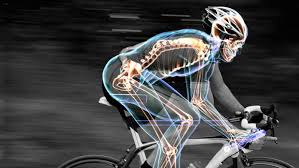Competitive cyclists have significantly lower BMD

Islamabad, October 2 (Newswire): The recent start of the North American cycling season marks the beginning of a physically demanding time for elite and professional bicycle racers who participate in multi-day stage races.
Previous research has found that competitive cyclists have significantly lower bone mineral density (BMD) than other endurance athletes, making them more susceptible to fractures.
The reasons for the reduced bone mass in elite cyclists are not fully understood, but one explanation is an imbalance between bone formation and bone breakdown due to the high-energy cost of stage racing.
However, a new University of Missouri study reveals that proper nutrition during multi-day stage races might prevent harmful changes in bone turnover.
MU researchers found that athletes who maintained energy balance by matching their energy intake to their energy expenditure showed increased markers of bone turnover — the process of breaking down old bone and forming new bone.
Because the increase in bone formation was greater than the increase in bone breakdown, the researchers concluded that these changes were not likely to negatively affect bone mass in the long-term.
“The findings suggest that participation in stage races might not have negative effects on bone turnover if energy intake matches the energy cost of high-intensity racing over several days,” said Pam Hinton, associate professor in the Department of Nutrition and Exercise Physiology.
“The results are consistent with the practical recommendation that elite cyclists should match their energy intake to the high energy demands of stage racing.”
In the study, Hinton examined markers of bone formation and bone breakdown in the blood of elite cyclists who participated in the Tour of Southland, a six-day, 10-stage cycling race. Hinton found significant increases in markers of bone formation and bone breakdown among the athletes whose energy intake matched their energy expenditure throughout the race.
Disrupted bone turnover, that is, reduced bone formation and increased bone breakdown, due to inadequate energy intake relative to expenditure is just one possible cause of low BMD among cyclists. Other factors include low-body weight, increased loss of calcium through sweat and significant time spent cycling, which exerts only minimal mechanical loading on the skeleton.
“This study measured only the short-term effects of stage racing on bone turnover; future studies should assess the long-term effects,” Hinton said.
The study, “Bone formation is increased to a greater extent than bone resorption during a cycling stage race,” will be published in Applied Physiology Nutrition and Metabolism. This is the first study to examine bone turnover during a cycling stage race.
Ends/Newswire
SA/EN





